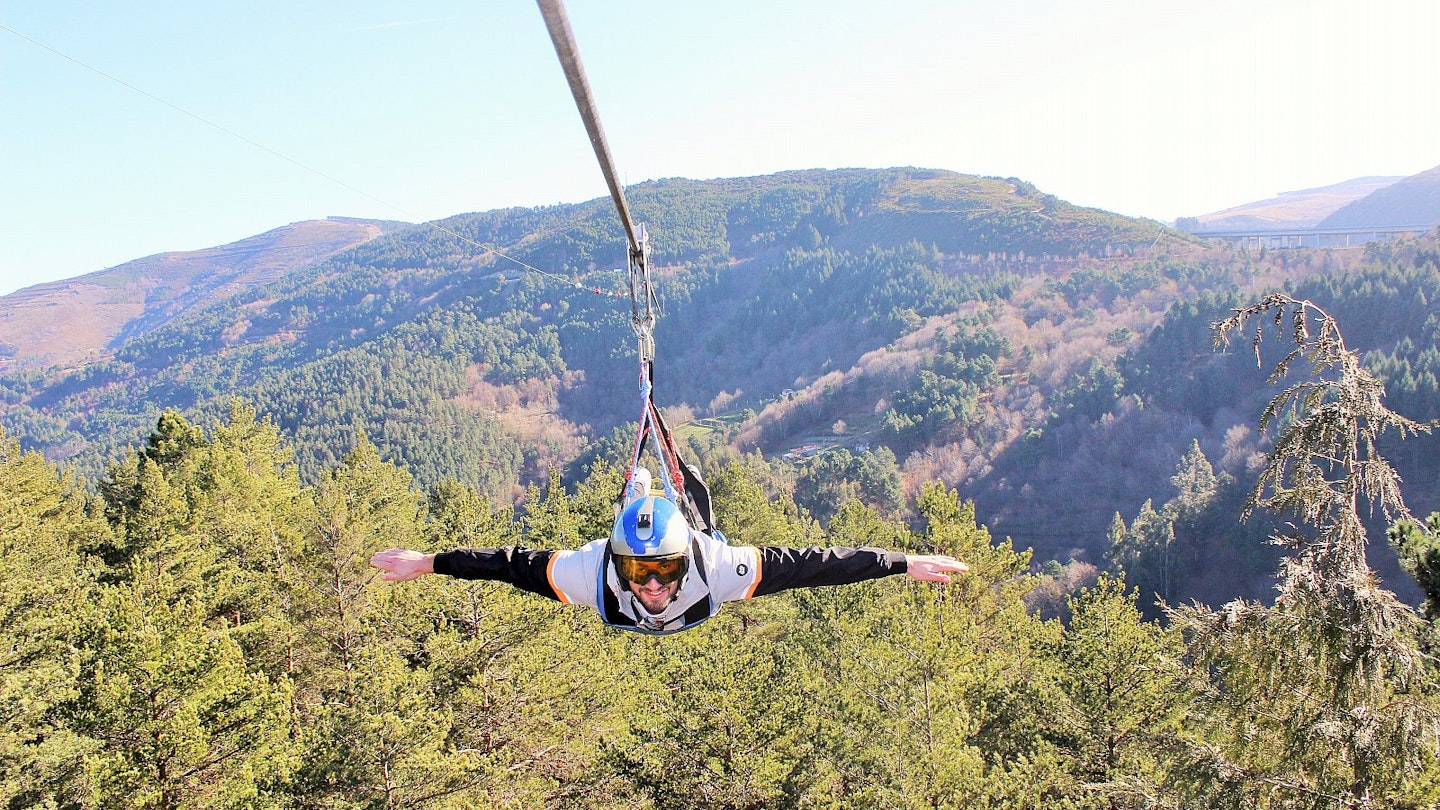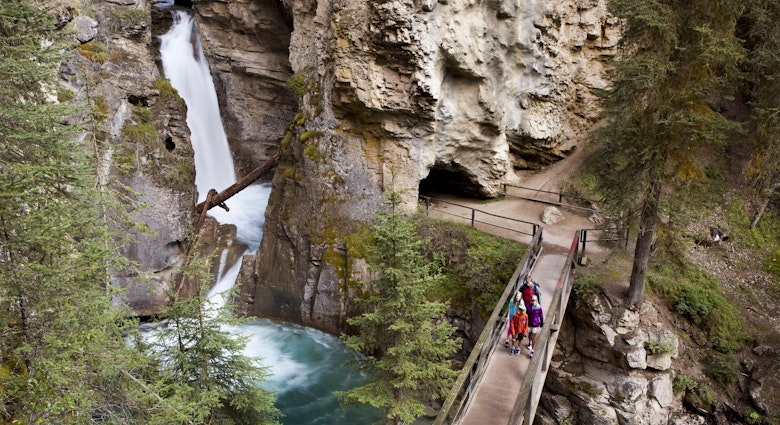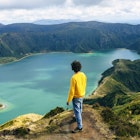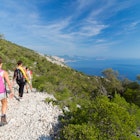If you're looking for adventure but the Portugal you know is all olive groves, cork trees, windswept beaches and lively cities, it’s time to turn your attention northwards. You don’t need to go far, either: within 100km of Porto, you’re introduced to the highland way of life in a region that has a history, climate, landscape and traditions all of its own.
There are, of course, urban centres oozing culture: you’ve got Portugal’s third largest city and spiritual capital, Braga, and the Unesco-recognised old town of Guimarães, for starters. However, the real beauty of northern Portugal lies in the wilderness of its great outdoors. Here, the craggy, elevated countryside is a patchwork of fragrant pine forests, gorges, granite boulders and roaming livestock, all punctuated by streams and seasonal bursts of colour from abundant citrus trees. And for adventure lovers, there are boundless ways to get stuck in.

Hike in Portugal’s only national park
Set your sat-nav for the country’s only national park, Parque Nacional da Peneda-Gerês, which straddles the northern border with Spain. This mountainous protected area, with verdant hillsides, sky-piercing peaks and granite outcrops, offers a glimpse of rural life in the extreme. For the dispersed communities largely living off the land here, traditions remain customary and the bustle of Braga, let alone the cosmopolitan streets of Porto, couldn’t feel further away.
Spread over roughly 700 sq km, it takes its name from two of its highest peaks, Serra da Peneda (1340m) and Serra do Gerês (1545m). Naturally, the best way to explore is on foot. You’ll find tempting waterfalls, Roman ruins and viewpoints promising sunsets to die for as you traverse the trails that criss-cross the park.
There are waymarked routes of varying length and difficulty, and lucky wildlife spotters could see anything from eagles and wild horses to boar, wolves and, who knows, even the legendary, whispered-of brown bear.

Fly along one of Europe's longest zip lines
Fancy flying between two hillsides along one of Europe’s longest zip lines? You can do just that and so much more at the pine-clad park of Pena Aventura, 110km northeast of Porto in the rural heartland of this region. Opened in 2007, it’s clearly enjoyed substantial investment, with care taken to create a well-maintained outdoor playground for all ages – and the ‘Fantasticable’ zip line is the star of the activity-filled show.
Once harnessed and helmeted, you’re driven up to the starting point on the opposite hill. Lying down, head-first in a sort of sling, you’re soon soaring at speed. It’s a thrilling ride that can quite literally take your breath away as the bristly treetops come to an abrupt halt and the ground falls away beneath you, leaving you to fly for roughly 1.5km at a heady 150m above the ground below.

Take your pick of the natural parks
While there may only be one national park, there are many more natural or nature parks, with a handful of them located in northern Portugal.
Starting in the northwest, you’ve got the Atlantic-facing Parque Natural do Litoral Norte with its weather-beaten sand dunes and hardy grasses. Heading east, there’s Parque Natural do Alvão, famed for its dramatic array of waterfalls; while the large Parque Natural de Montesinho is more like the national park, with lush landscapes, granite formations and isolated communities.
Further east still, the 120km-long sliver of Parque Natural do Douro Internacional hosts a remarkable rugged canyon that funnels the River Douro in a line, which also happens to mark the border with Portugal's Iberian sibling Spain.
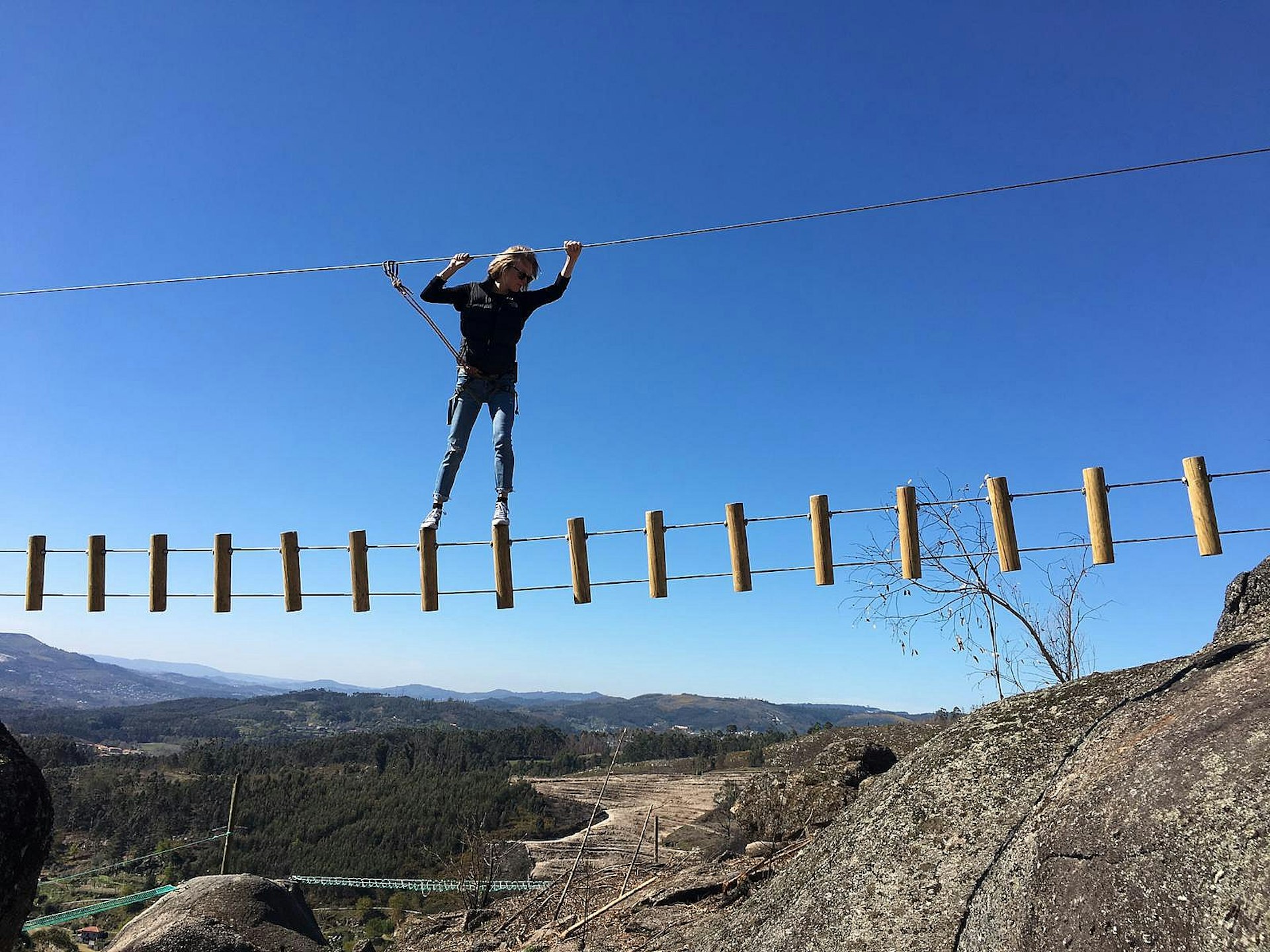
Tackle a hillside assault course
Head northeast of Porto for the adventure park of DiverLanhoso, an outdoor jungle gym for all ages constructed with an eye sympathetic to its surroundings. As well as a 350m-long zip ‘slide’, rock climbing and canyoning, eager adventure hunters can don a harness and give the ‘Pontes Suspensas’ course a go. This series of 38 suspended bridges will test your balance as well as your resolve.
Unlike similar courses where you’re high in the treetops, this one has you navigating steel cables and wooden slats that hug the rocky hillside. Expect to clamber over boulders, crawl through barrel tunnels and be impressed by the views of the valley below from rock-top vantage points. Top tip: take a pair of sports gloves as it can be hard going on your hands.
Sample local Alvarinho wines
Adventuring is thirsty work. Luckily, this region is renowned for its crisp Alvarinho wine, a type of vinho verde (literally ‘green’ or young wine) best sipped chilled under a bright blue sky. The Portuguese are understandably proud of this distinctive and typically light wine produced exclusively in the north (and in Galicia, Spain).
The town of Monção, on the border with Spain in northwest Portugal, sees itself as the hub of Alvarinho viticulture; as such, it’s where you’ll find the Museu Alvarinho, housed in a brilliantly whitewashed stone building in the main square. Exhibits are in Portuguese, but there are interesting photographs, artefacts and sniff-tests to help set the scene before a tasting session in the atmospheric stone cellar.
If you're visiting in summer, check dates for the Feria do Alvarinho (Alvarinho Fair), a three-day excuse to sample as much of the good stuff as possible while eating paired delicacies and tapping those toes to traditional folk music.
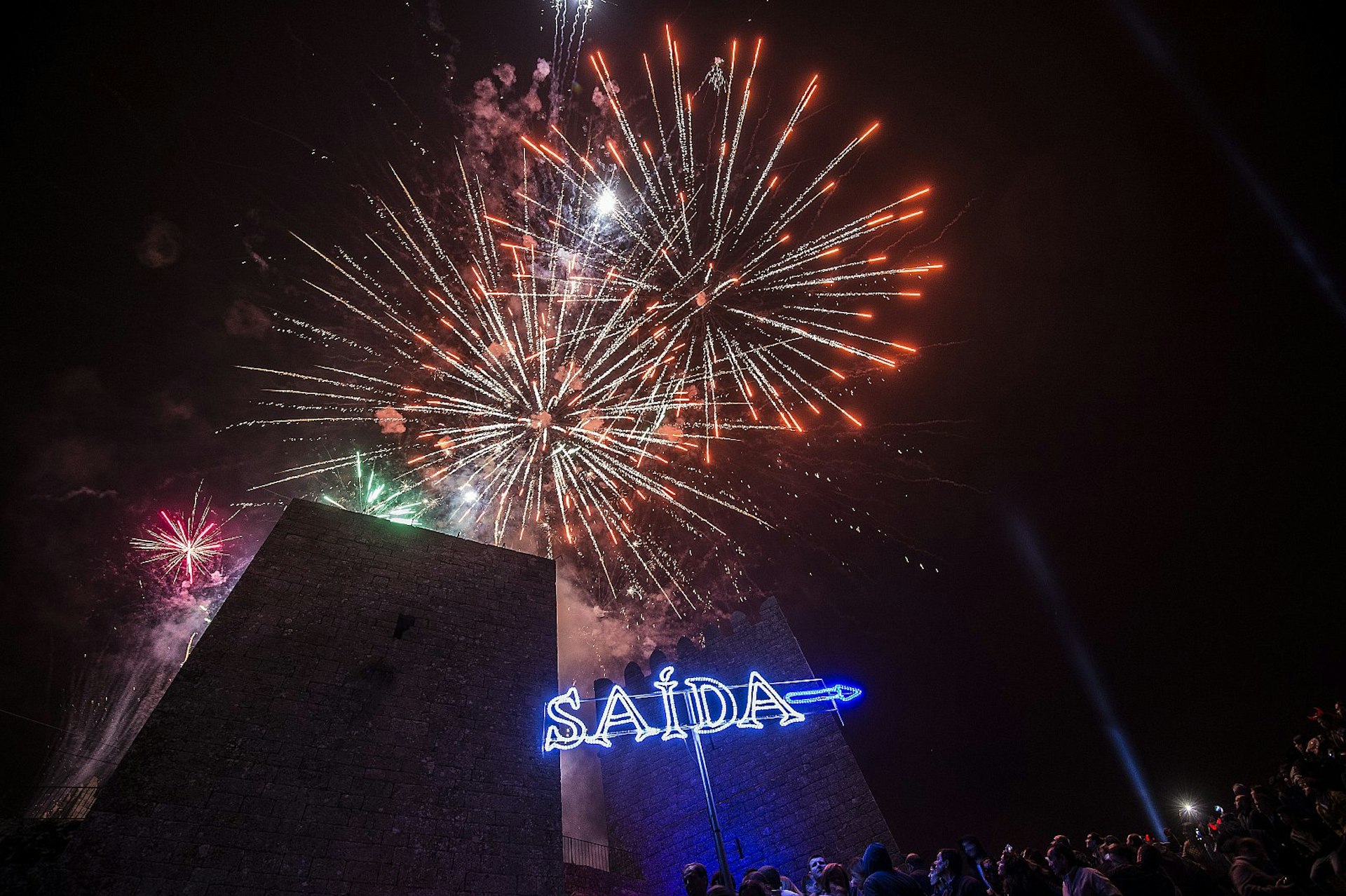
Brave a ‘Friday the 13th’ festival
Friday the 13th is anything but unlucky for hilltop Montalegre in the very far north of Portugal. On the contrary, it signals the start of what will be a raucous and wonderfully weird weekend of fun and freaky frolics during its Sexta13 festival.
In short, this celebration embraces the occult and witchcraft to challenge superstitious goings-on. The town’s 13th-century fortress is the backdrop to vivid performances with model dragons, costumed actors swooping in on wires and an epic fireworks display. Curiously, this procession of demons and witches is led by a quirky local priest, Father Fontes, now in his eighties. There’s a distinct Nightmare Before Christmas feel to things, with Alvarinho contributing to the revelry.
Sexta13 takes place every Friday the 13th, which occurs between one and three times per year. Come dressed to impress or just pull up a pew and observe the spectacle, but whatever you do, arrive early. Sexta13 sees Montalegre swell to around 60,000 people, six times the population of the surrounding municipality.
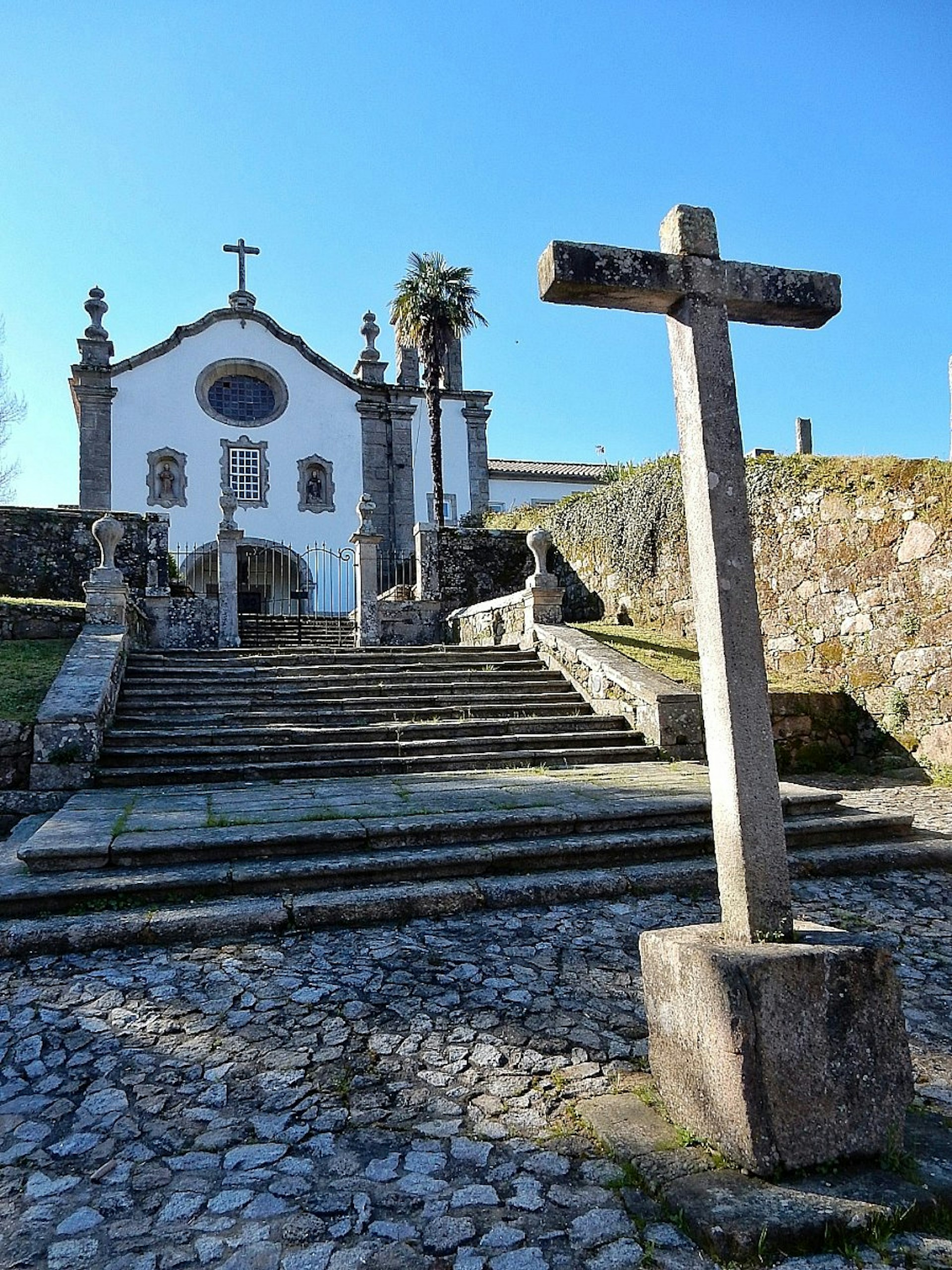
The chance to stay local
Exploring this remote region gives you the chance to stay in small, often family-run accommodation. Look out for properties that are part of the Hotéis Rurais de Portugal, an association that promotes a collection of largely independent countryside residences.
In Monção, for example, there’s the former nunnery of Hotel Convento dos Capuchos. Run by a brother-and-sister team, there’s a petite swimming pool, tennis courts, and it even has its own back door to the town’s 14th-century ramparts.
If you’re heading to the national park, relaxed Hotel Misarela is a brilliant place to stay, thanks in part to its pet-friendly modern rooms with hammock-decked balconies, but also to its exceptional restaurant. Its good food is a necessity after a long hike!
Meanwhile, Casas Novas in the quiet northeastern village of Redondelo is the ideal place to hit pause for a night or two. The historic manor house is of particular interest here, with some rooms containing original 18th-century stone features. The fresh breakfast is also first-rate, and the swimming pool an added bonus.
Like this? Try these
- The Azores, Europe's secret islands of adventure
- Where to find the Algarve's best beaches
- How to live like a Local in Porto
